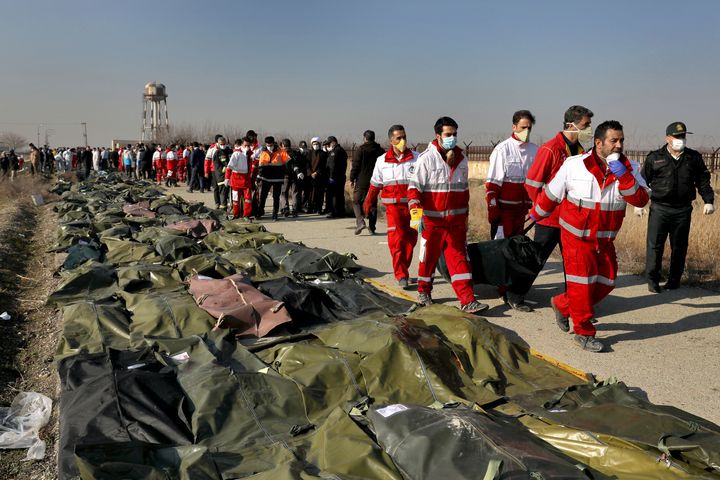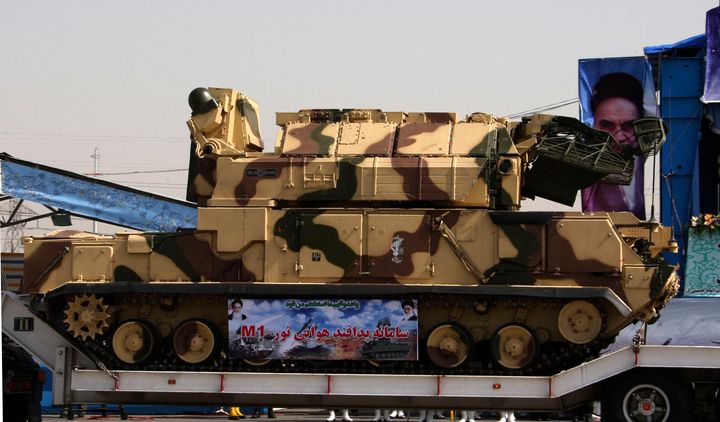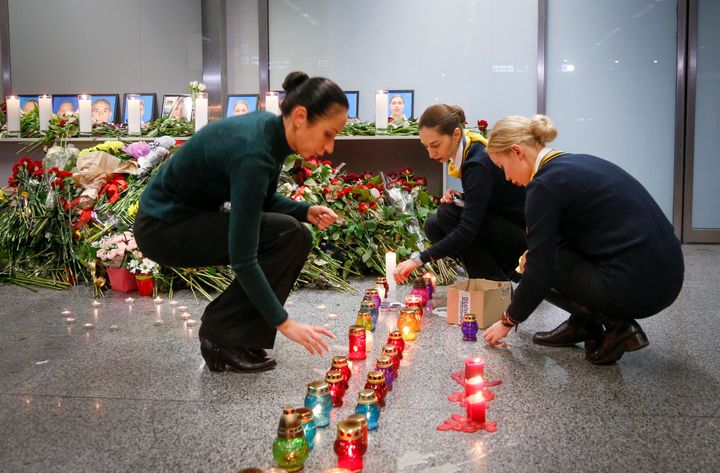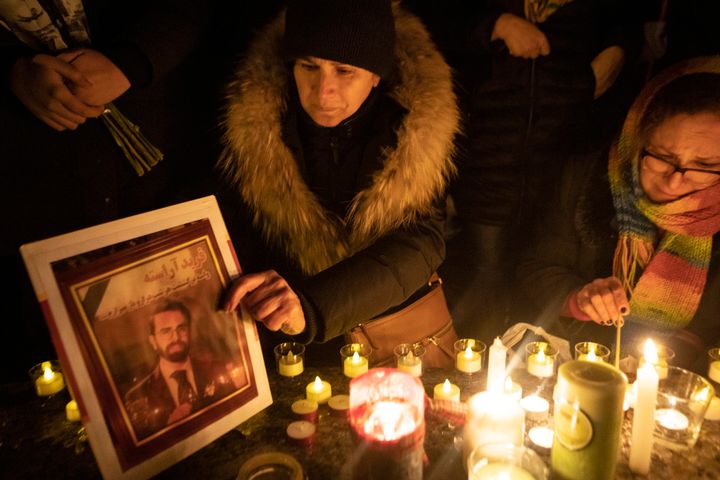It is “highly likely” the Ukrainian jetliner that crashed near Tehran killing all 176 people on board was shot down by a missile, Western leaders have declared, pointing the finger of blame at Iran.
US president Donald Trump framed the tragedy as a mistake but dismissed Iran’s initial claim that it was a mechanical issue with the plane.
“Somebody could have made a mistake on the other side.” he said, noting the plane was flying in a “pretty rough neighbourhood”.
Here’s everything we know so far...
The accusation
Citing multiple sources, the leaders of the UK, US, Canada and Australia have said evidence suggests it was an Iranian surface-to-air missile that brought down Ukrainian International Airlines Flight 752 on Wednesday just outside Tehran.
Boris Johnson said there was now a “body of information” to support the claim but did not offer specifics but details of the US evidence have emerged.
Reuters reports that data showed the plane was airborne for two minutes after departing Tehran when the heat signatures of two surface-to-air missiles were detected.

That was quickly followed by an explosion in the vicinity of the plane, a US official told the news agency. Heat signature data then showed it on fire as it went down. Heat signatures are infrared emissions detected by US military satellites.
There is no evidence as yet to suggest it was intentional. The airliner could have been mistaken for a threat, said four US officials, speaking to Reuters on condition of anonymity to discuss sensitive intelligence.
Iranian air defences would have been on high alert at the time – just hours after it launched missiles at two US bases in retaliation for the killing of Qassem Soleimani.
In social media posts, ordinary Iranians voiced anger at their authorities for not closing the airport after Iran’s missile launches, Reuters reports. Scores of those on board were Iranians with dual nationality.
The new video
On Thursday, a video surfaced on social media that appears to show a missile-like object exploding in the skies over Tehran.
The location at which the footage was filmed has been verified by investigative site Bellingcat and The New York Times, and shows a fast-moving object rising before a fiery explosion.
An object, apparently on fire, then continues in a different direction.
The missile
The weapon at the centre of the accusation is the Tor, also called the SA-15 Gauntlet by Nato. It is a short-range “point defence” system that integrates the missile launcher and radar into a single tracked vehicle.
To attack a target, the Tor operator must identify it on the radar screen and direct the missile to launch.

A former European air defence officer, who now works on missile defence technology, said that ideally, flight plans and transponder codes of all scheduled civilian flights would be shared with military units stationed near an airport.
“Shooting down a hostile aircraft is easy,” the officer, who declined to be identified because of the sensitivity of the issue, told Reuters.
“It’s identifying the aircraft and not shooting down friendlies that are the challenges.”
The denial
Iran has flatly denied that the plane was hit by a missile and has called the latest reports “psychological warfare” against the country.
An initial report issued by Iran’s civil aviation organisation on Thursday said the three-year-old airliner, which had its last scheduled maintenance on Monday, encountered a technical problem shortly after takeoff.

It said the plane’s pilots did not make a radio call for help and that the aircraft was trying to turn back for the airport when it went down.
Government spokesman Ali Rabiei said in a statement: “All those countries whose citizens were aboard the plane can send representatives and we urge Boeing to send its representative to join the process of investigating the black box.”
The victims
On Thursday Boris Johnson confirmed four Britons died in the plane crash, up from the earlier reports of three.
The three known British victims included engineer Sam Zokaei, from Surrey, Saeed Tahmasebi Khademasadi, from west London, and Mohammad Reza Kadkhoda Zadeh, from near Brighton.
In total 176 people were killed when the plane crashed moments after it left Imam Khomeini International Airport in Tehran at 6.10am local time (2.40am GMT) on Wednesday, bound for the Ukrainian capital Kiev.
Canadians held candlelit vigils in several cities on Thursday to remember 63 citizens killed in the crash, which Canada’s prime minister Justin Trudeau called a “tragedy that shocked the world”.
The investigation
The US National Transportation Safety Board (NTSB) has accepted an invitation from Iran to take part in its investigation into the crash.
The NTSB confirmed it would take part in the probe after an Iranian official told Reuters of the agreement.
Canada, which had dozens of passengers onboard, has also assigned an expert, while a team from Ukraine held discussions in Tehran on Thursday.

But the prospects of a thorough investigation were dealt a blow when images of bulldozers clearing the crash site emerged in Iranian TV.
The prospect of war
It was not immediately clear how the US and its allies would react although the leaders of those countries have all been keen to stress the tragedy was likely accidental.
Despite efforts by Washington and Tehran to step back from the brink of possible war, the region remained on edge after the killing of Gen Soleimani and Iran’s retaliatory missile strikes. US troops were on high-alert.
Late on Thursday, the US House approved a measure that aims to bar any further military action against Iran without congressional approval. However, the resolution approved by the Democratic-majority House is nonbinding and no similar measure could pass the Republican-controlled Senate.
